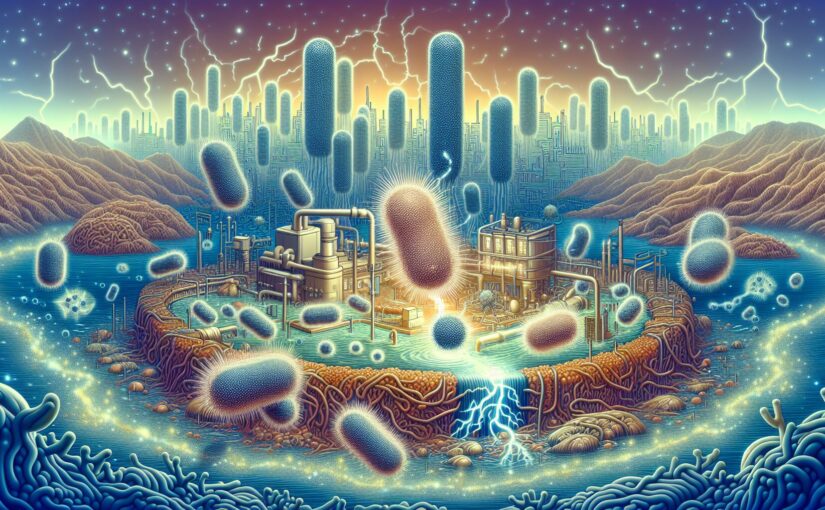While the term “bacteria” may evoke thoughts of disease and discomfort in most people, these microscopic organisms are perhaps more helpful than we give them credit for – especially in the realm of wastewater treatment. Certain types of bacteria, known as electroactive bacteria, are dynamic actors in wastewater management, demonstrating an extraordinary ability to harvest energy, treat waste, and even generate electricity in the process. These unique properties have the potential to revolutionize how we manage our waste, making our processes much cleaner and more efficient.
What are Electroactive Bacteria?
Electroactive bacteria are a type of bacteria that demonstrate a unique ability: they can directly transfer electrons to and from solid surfaces, like the anodes and cathodes in a fuel cell or battery (Nealson, Kenneth & Rowe, Aaron, 2016). This type of extracellular electron transfer (EET) allows them to participate in electricity production, making them incredibly valuable in the field of renewable energy.
Electroactive Bacteria in Wastewater Treatment
Wastewater is a major by-product of human civilization and its management is critical to maintaining a clean and healthy environment. Wastewater can cause major environmental issues if not treated properly. It contains substances that are harmful to aquatic life and can contribute to the spread of disease among humans.
In the midst of this environmental challenge, electroactive bacteria have emerged as an unlikely hero. They can break down organic matter found in wastewater, removing harmful compounds in the process (Rabaey & Rozendal, 2010). Even more impressively, they can convert these waste products directly into electricity – a process known as bioelectricity generation.
The Future of Electroactive Bacteria in Wastewater Treatment
The role of electroactive bacteria in wastewater treatment has enormous potential, not just for lowering the environmental impact of waste, but also for revolutionising our energy infrastructure. Through microbial fuel cells (MFCs), these bacteria can convert organic waste directly into electricity, creating a clean and renewable source of energy.
Research is underway to find ways to maximize the efficiency and cost-effectiveness of this process. There are challenges to overcome – including how to scale up the system for industrial use – but the potential benefits are significant. A future where our waste not only ceases to be a pollution problem, but also becomes a valuable resource, is worth fighting for (Logan, 2008).
Conclusion
While there’s much more to learn and develop in this field, the fact remains that electroactive bacteria in wastewater treatment are a promising path towards a cleaner and more sustainable future. So, the next time you think of bacteria, remember not all of them are harmful – some might just be our greatest partners in defeating pollution and harnessing energy.
Sources:
1. Nature Microbiology: Breathing metals
2. Renewable & Sustainable Energy Reviews: Bioelectrochemical systems: An outlook for practical applications
3. Energy & Environmental Science: Miniature microbial fuel cells and stacks for urine utilisation
